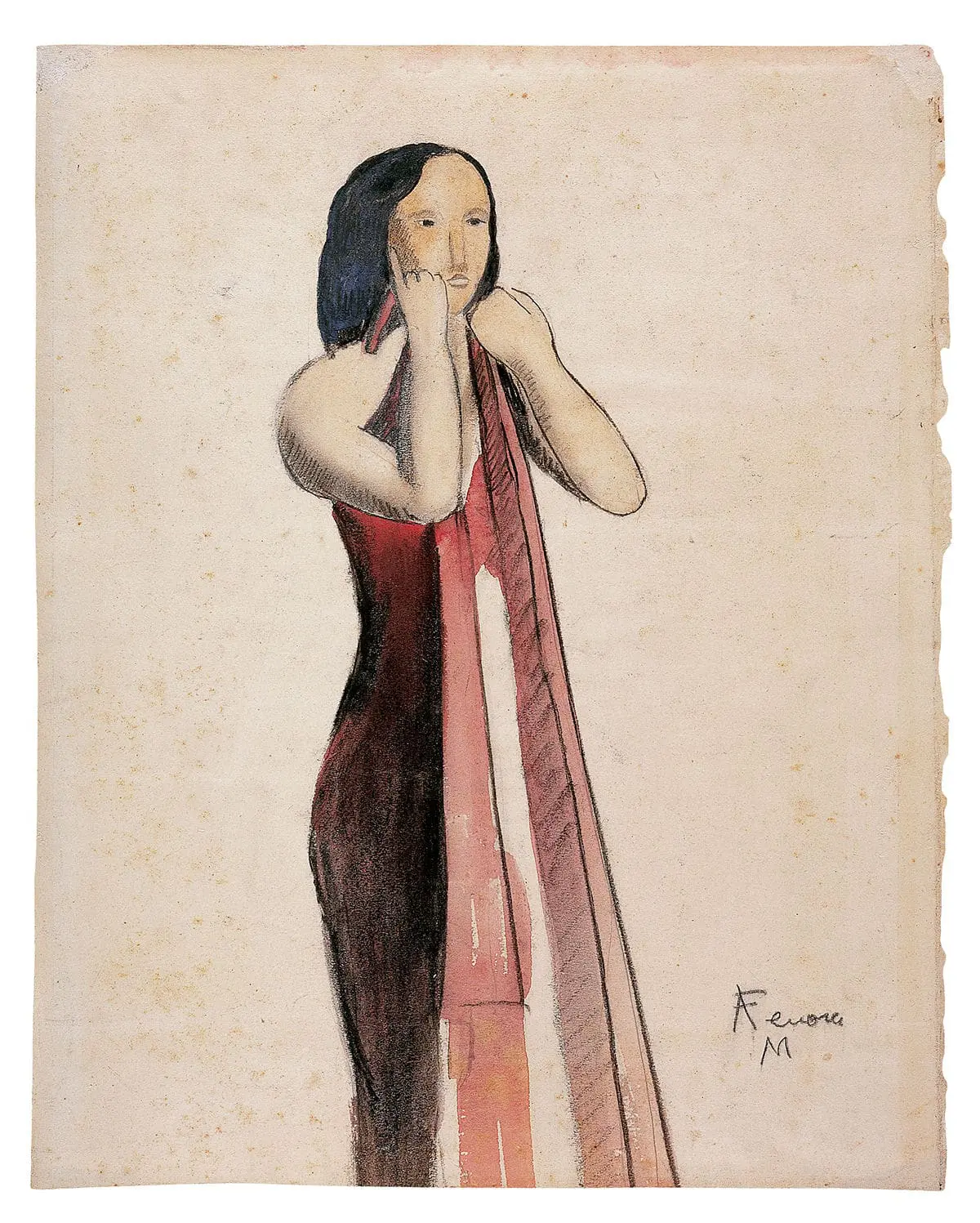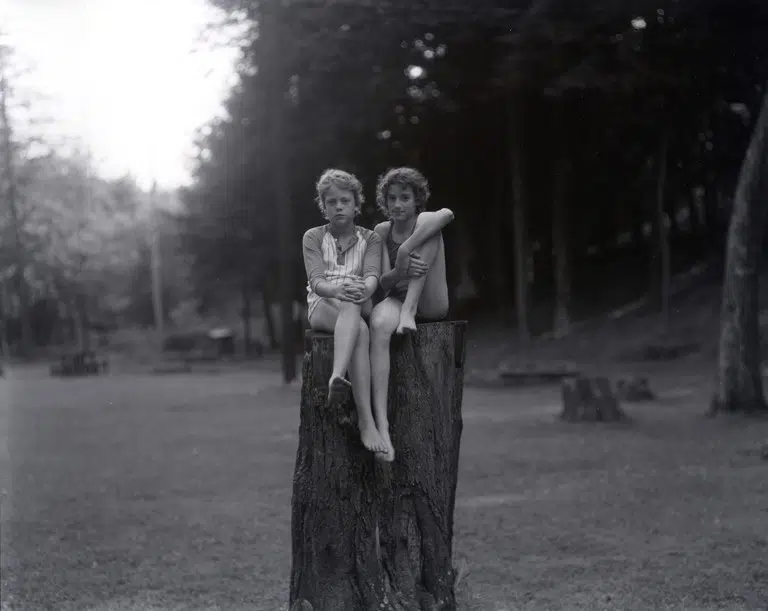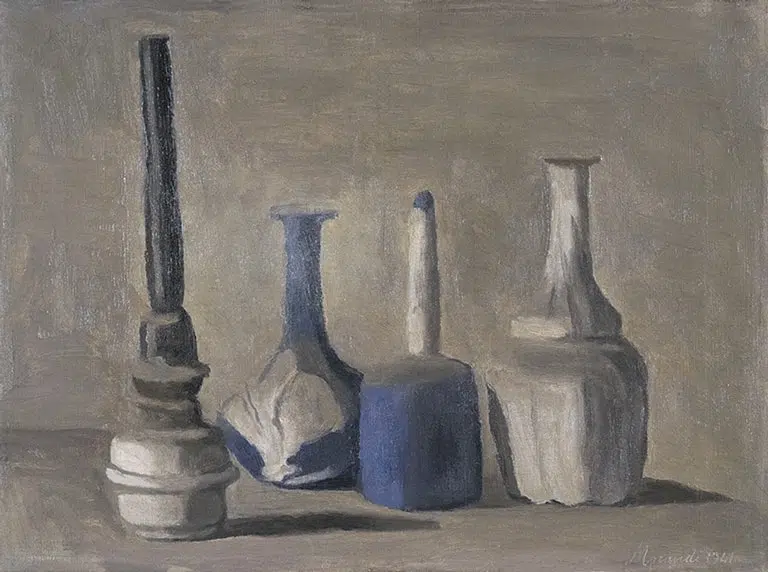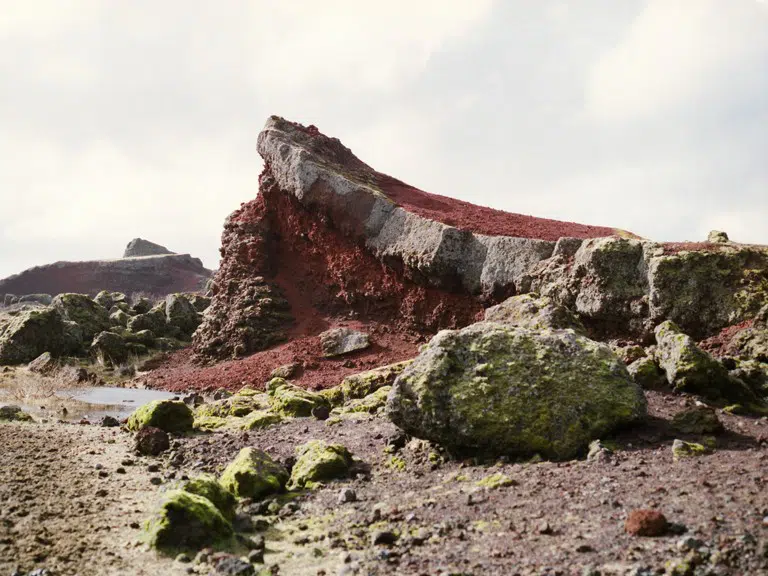Female Figure [Figura femenina]

Apel·les Fenosa
Female Figure [Figura femenina] , ca. 1932
© Fundació Apel-les Fenosa, 2021
© Fundación MAPFRE COLLECTIONS
Technique
Pencil and watercolor on paper
Dimensions
Printed area: 32.5 × 25.8 cm
Frame size: 64 x 61.5 x 4 cm
Inventory
FM000279
Description
Fenosa’s drawings have received very little publicity, despite the fact that, as is usual among sculptors, he did a great many of them. The work in question is a real revelation, because although it is undated we can place it as being from the 1930s, more specifically around 1932. What stands out is the way the shape is delineated in strong, decisive strokes, defining a compact, closed volume: big, strong lines in the folds of the cloths, in the manner of robust buttresses that seem to support the figure and evoke clear references to Neo-Cubism and Art Déco.
Although Apel·les Fenosa’s education took place in Barcelona, in a very Mediterranean environment and later among the group of young people known as Els Evolucionistes, who dismissed the approach of Eugeni d’Ors’ Noucentisme, his work took on its robust personality during his time in Paris between 1921 and 1929. There he frequented the artistic circles and gatherings at the cafés of Montparnasse, and took a particular interest in studying the Greek and Egyptian antiquities in the Louvre and the Musée Guimet. In his fascination with Classicism, Fenosa followed the line of all his contemporaries who, caught up in the movement of the return to order, reverted their gaze towards the traditions of classical cultures. In his own words, recorded by Salvador Espriu: “Overlaying your own personality upon what others have done is the right thing, and it should be as pure as possible. In my work, everything looks alike, right from the beginning. And its roots are as far away as you can get: you could trace them back to Ancient Greece. But not to Mayan art, or Persian art, the art of cruel artists!” (cit. in Baltasar Porcel, ‘Apel·les Fenosa, o los brotes de intensidad’, Apel·les Fenosa. 1899-1988, 1999). His profound adoption of the Mediterranean tradition led him to a reinvention of classicism, thanks to a unique personality that brought him closer, in classical terms, to the most advanced movements of his time while at the same time distancing him, in terms of the rejection of other traditions, from the interest that the primitive and archaic arts aroused in the artists of the historical avant-gardes.
When, in 1929, Fenosa returned to Barcelona with the intention of just spending a few days, critics began to regard him as one of the most solid assets of the new Catalan sculpture, and he decided to stay on a bit longer. Unsurprisingly, his work exuded a breath of fresh air and a modern lyricism brought about by his Parisian years. In Barcelona he was surprised by the advent of the Republic and made the decision to remain in his country to contribute to the new society that he envisioned. This was the start of a period of feverish activity, during which he took part in numerous exhibitions where he showed small female figures of extraordinary grace and beauty, created with an admirable simplicity of execution and exuding a certain air of mystery but with an absolute rotundity of shapes and volumes.
It was during this time when, in 1932, he made a statuette in fired clay (31 x 9 x 7.5 cm; rep. in Apel·les Fenosa, 1983), whose preliminary drawings, or at least the concept, are captured in this beautiful watercolor under review. In contrast to other drawings by Fenosa, in which an ethereal lyricism prevails, this female figure is a perfect example of what we might call ‘sculptor’s drawings’; strong, decisive strokes throughout define a volume that is firmly set in its surroundings, occupying the space it needs to settle assertively. This is what gives this work such value, grandeur and extraordinary interest among the whole of Apel·les Fenosa’s creation.
[Josefina Alix]
Apel·les Fenosa: catalogue raisonné de l’oeuvre sculpture , (textos, Nicole Fenosa, Bertrand Tillier, Jean-Pierre Changeux), Polígrafa, Barcelona, 2002.
Apel·les Fenosa, L´espiritualitat de la materia, cat. exp., Diputación de Barcelona, Barcelona, 2010.
COGNIAT, Raymond, Apel·les Fenosa, Polígrafa, Barcelona, 1969.
CORREDOR- MATHEOS, José, Apel·les Fenosa. Obres del Fons d’Art de la Generalitat de Catalunya, Generalitat de Catalunya, Departamento de Cultura, Barcelona, 1992.
CORREDOR- MATHEOS, José, Fenosa, home, artista, i la pau, Ayuntamiento de Barcelona, Barcelona, 1993.
DOÑATE, Mercè (Comisaria), Apel·les Fenosa (1899- 1988), cat. exp., Museo de Arte Moderno del MNAC, Barcelona, 1999.
DOÑATE, Mercè (Comisaria), Dades biogràfiques en Apel·les Fenosa, cat. exp., Palacio de la Virreina, Barcelona, 1984.
LEYMARIE, Jean, Apel·les Fenosa, Skira, Génova, 1993.




